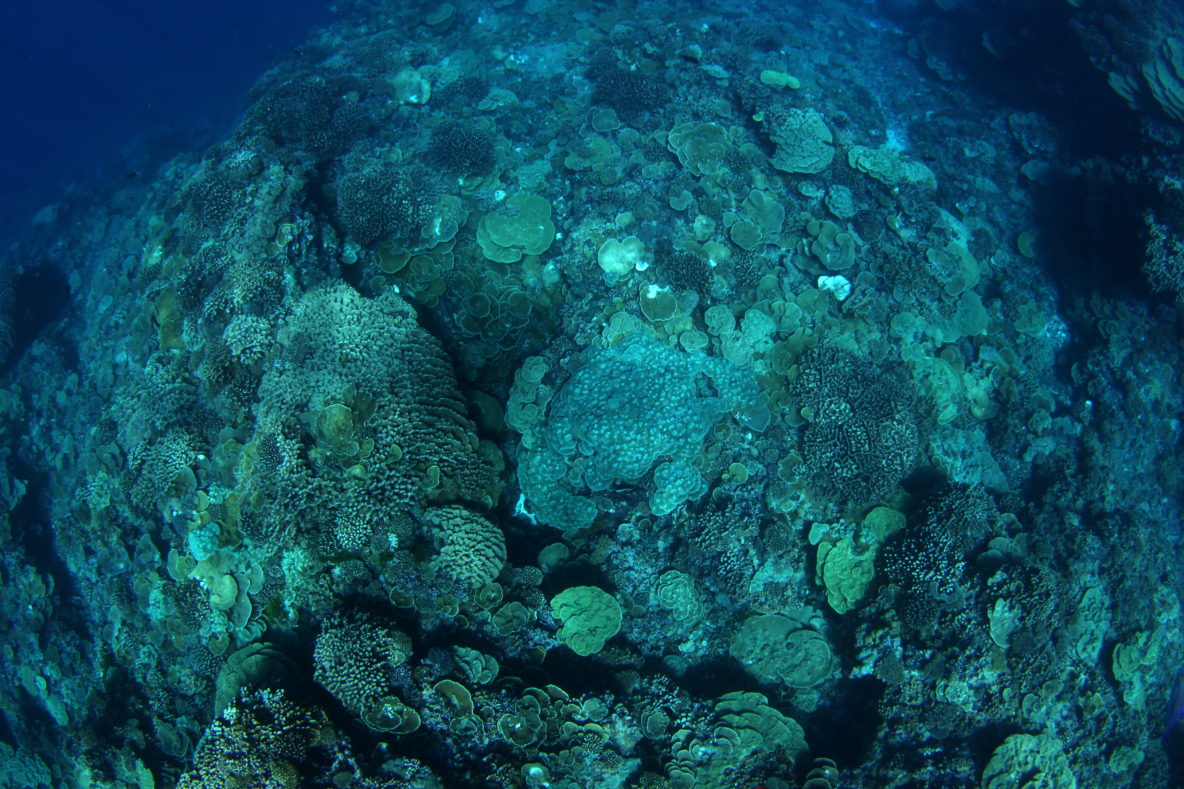Dylan E. McNamara, Nick Cortale, Clinton Edwards, Yoan Eynaud, and Stuart A. Sandin
Read the full article here.
ABSTRACT:
Nonlinear time-series forecasting, or empirical dynamic modelling, has been used extensively in the past two decades as a tool for distinguishing between random temporal behaviour and nonlinear deterministic dynamics. Previous authors have extended nonlinear time-series forecasting to continuous spatial data. Here, we adjust spatial forecasting to handle discrete data and apply the technique to explore the ubiquity of nonlinear determinism in irregular spatial configurations of coral and algal taxa from Palmyra Atoll, a relatively pristine reef in the central Pacific Ocean. We find that the spatial distributions of coral and algal taxa show signs of nonlinear determinism in some locations and that these signals can change through time. We introduce the hypothesis that nonlinear spatial determinism may be a signal of systems in intermediate developmental (i.e. successional) stages, with spatial randomness characterizing early (i.e. recruitment dominated) and late-successional (i.e. ‘climax’ or attractor) phases. Common state-based metrics that sum community response to environmental forcing lack resolution to detect dynamics of (potential) recovery phases; incorporating signal of spatial patterning among sessile taxa holds unique promise to elucidate dynamical characters of complex ecological systems, thereby enhancing study and response efforts.

